AMERICAN WEDDINGS BLOG
Stay up to date with the latest wedding ceremony trends, script writing inspiration, tips and advice for first-time officiants, and news that matters to couples and wedding ministers.
Stay up to date with the latest wedding ceremony trends, script writing inspiration, tips and advice for first-time officiants, and news that matters to couples and wedding ministers.
Published Thursday, Apr. 8th, 2021
Last updated Thursday, Sep. 16th, 2021

Pagan wedding and betrothal altars are truly magical things to behold... in more ways than one. But if you’re not familiar with Pagan ritual, seeing one for the first time can be confusing or even a little alarming, depending on the elements it includes.
The illustration above is of an actual Pagan altar used during a ‘Year and a Day’ betrothal ceremony -- a traditional handfasting rite -- for a gay Pagan interfaith couple (Druid and Wiccan) living in Seattle, Washington.
These items are commonly used in Pagan rituals, and you can expect to see one or more of them on a couple’s altar when officiating or attending a wedding.
Keep in mind, the objects chosen for an altar are very personal, so while there are similarities of meaning within these faiths, they will symbolize something a little different for everyone.

The wand symbolizes the will of the spirit.
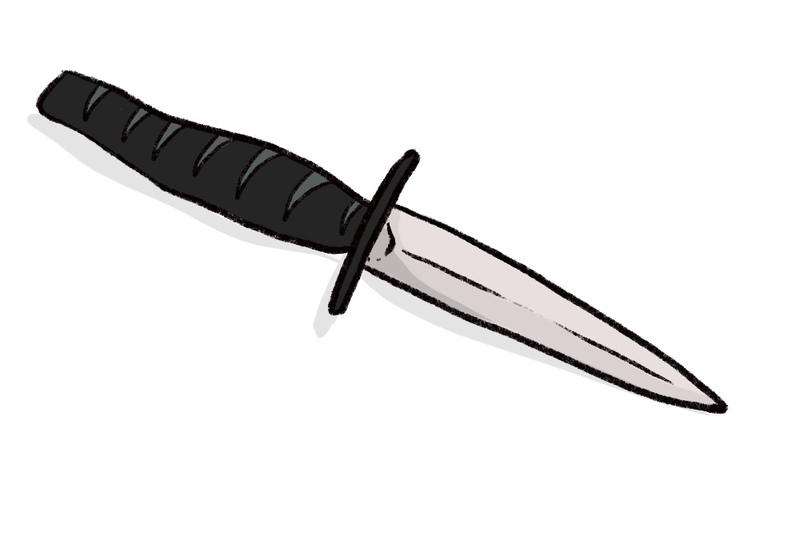
The athame is a ceremonial dagger that symbolizes the mind and its intellect.
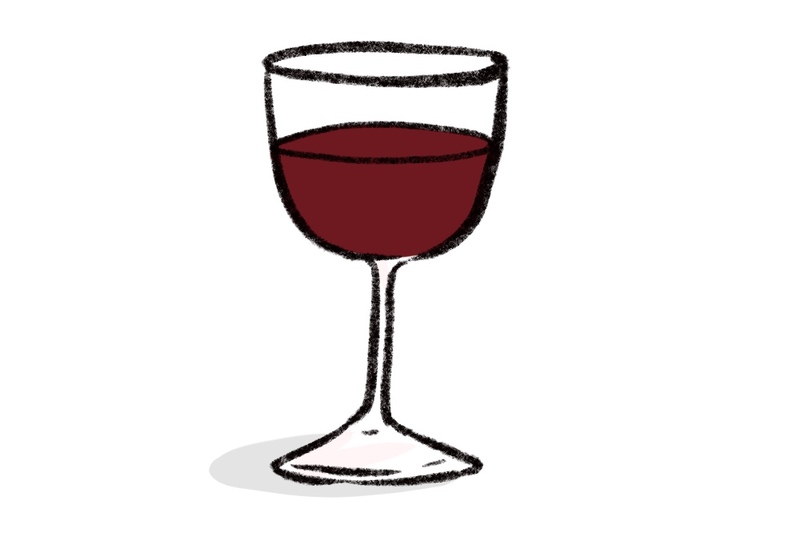
The chalice filled with ceremonial wine symbolizes the heart and the emotions.
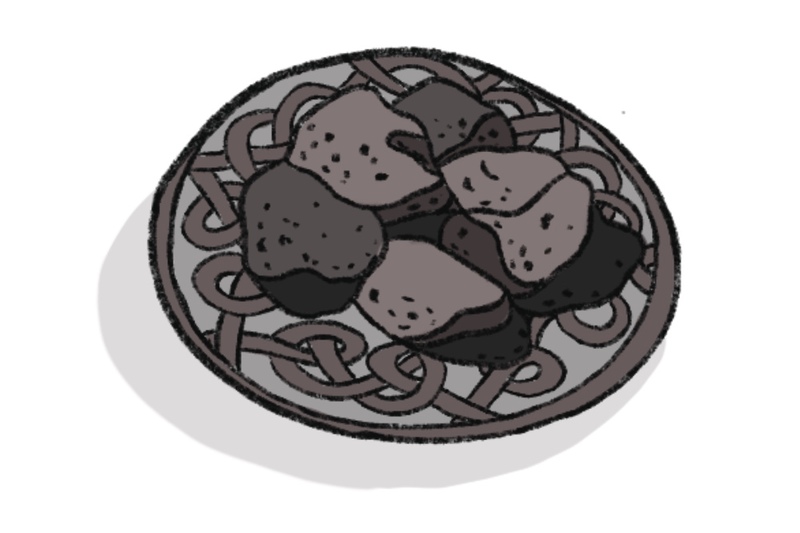
The stones symbolize the body.
When possible, a fire is used during the ceremony to burn the couple’s offerings to the gods. In the case of this ceremony, a fire wasn’t permitted in the venue, so the grooms placed stones from their hearth fire (home fireplace) on the altar in a small bowl. Offerings were poured onto the stones and burned later.

Candles can symbolize many things.
Candle lighting can symbolize the element fire, or represent finding light in darkness. Lighting a candle together, such as with a unity ritual, can be part of a spell or ritual casting. The color of the candle can also have special meaning. For example: white candles are used to welcome healing and harmony, and green candles bring growth and abundance.
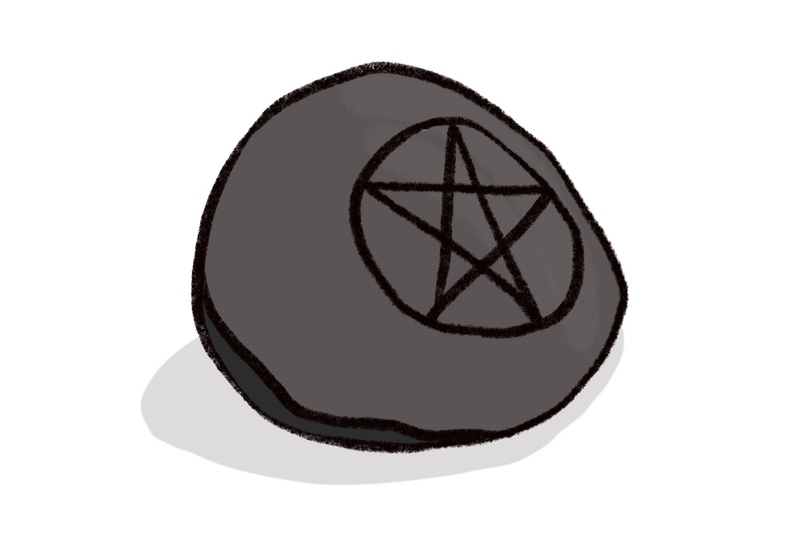
The pentagram symbolizes faith and the five elements: spirit, air, earth, water, and fire.
Although it gets used in pop culture a lot, the pentagram’s not just a 1980s doom metal band or a portal to Satan. The symbol doesn’t represent ‘good’ or ‘evil,’ it represents connection to faith and a sacred space.
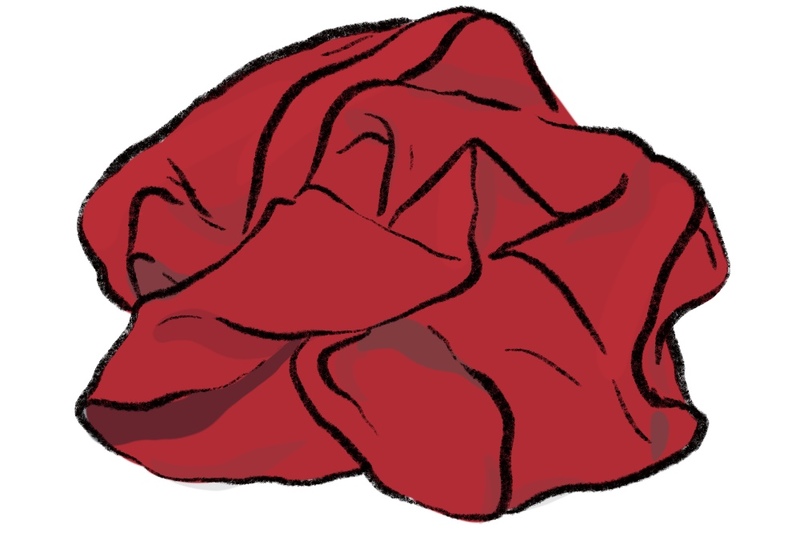
Color can carry a lot of meaning in rituals.
Here, the crimson red color symbolizes health, and coordinated with the couple’s handfasting cord. The cord was woven crimson and gold, symbolizing health and prosperity.
Now, we wouldn't be surprised if you still have a few lingering questions. We understand! Although Modern Paganism (or Neo-paganism, as it's sometimes called) is the fastest growing spiritual movement in the US, its diverse traditions are still new to many people.
Other very common items you might expect to see, but that aren’t illustrated above, include a handfasting cord or ribbon, sage or incense, and the couple’s wedding bands (if it is a marriage rite).
You might also see bones, skulls, stones, crystals, candles, herbs, flowers, wreaths, knives, goblets of water, wine, or whiskey, carvings, and more. This will be determined by the type of ritual or spell being performed, and the unique spiritual beliefs of the couple.
I heard there might be dead animals or goblets of blood on the altar...
If you’ve gotten most of your information about Pagan ritual from television, movies, or unchecked Reddit forums, there’s a good chance you don’t have the full picture. Ancient Pagan rituals probably did involve some animal sacrifice (read about Viking blót sacrifices here). But times have changed, and spiritual practices have changed with them. These days, many Pagans are vegetarian or vegan, and most practitioners value harmony and compassion between all living things above all else.
Still, every altar is different, and this is entirely up to the couple (and their venue) to decide. The rituals they choose, and the items on their altar, will reflect the tenets of their spirituality and the ritual they’re casting.
Nope! It’s true, wedding altars seem to call out to us, drawing us close with a whisper of incense or the sparkle of polished gemstones. Draped in richly textured and colored fabrics, and covered in intriguing looking objects, it’s no wonder that you want to reach out and touch them… But don’t, ok?
Like any other religious altar or shrine, these ceremonial arrangements carry great spiritual significance, and the items placed on them are sacred. It’s important that you don’t pick anything up to admire it without asking for permission first, no matter how shiny, sharp, delicious, or appealing it looks.
If you’d like to light a candle or participate in blessing the couple in another way, ask someone how you can be involved. They will be happy to help you!
This no-touch policy goes for officiants, too, at least until you’ve been given permission.
If you’ve been asked to officiate a Pagan wedding, talk to the couple about altar etiquette: Clarify ahead of time what items you can touch and which you should leave alone.
Then ask them if there’s anything more you should be mindful of, especially if you’ll be helping them to complete a unity ritual (such as a traditional handfasting or candle lighting) using items placed on the altar. This is best done during the rehearsal.
Year and a Day ceremonies are the first step in the wedding process for many Pagans. They’re also very popular for nondenominational or nonreligious couples who want their wedding and engagement to honor their Celtic, Scottish, or Irish heritage.
Year and a Day ceremonies aren’t legally binding, and there’s no paperwork to complete, but the bond they form can mean more to many couples than their actual wedding. These rituals signify a couple entering into a deep spiritual union and commitment, one that goes far beyond a conventional engagement. They’re held one full year and one day before the legal solemnization of marriage, and frequently include a handfasting.
 Explore the origins of ancient Paganism and learn how to incorporate the magic of handfasting into your own wedding or commitment ceremony.
Explore the origins of ancient Paganism and learn how to incorporate the magic of handfasting into your own wedding or commitment ceremony.
This deep dive into one of the most exciting trends in weddings is inspired by love stories that reach far back into the misty origins of human history, when Druids and Priestesses dispensed esoteric wisdom, cast powerful spells, and magic and nature were one-and-the-same.
Written and illustrated by AMM’s own Jessica Levey, this book is full of whimsical illustrations, and carefully researched and crafted stories and imagery that are your ticket to your own adventure.
Become a Wedding Officiant with Our Free Online Ordination!